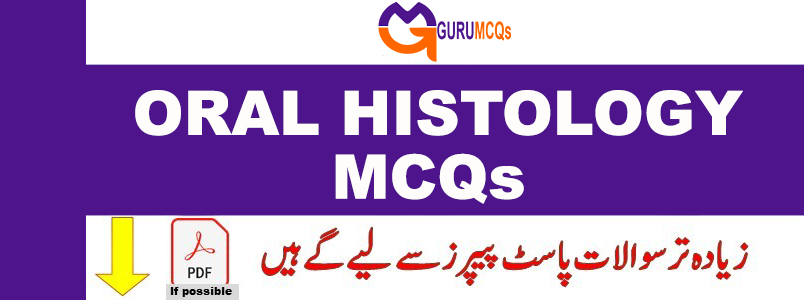
Histology, derived from the Greek words “histo,” meaning tissue, and “logy,” meaning science, is the scientific discipline dedicated to the study of tissues. By delving into oral histology and embryology, individuals can establish a robust understanding of oral biology. The subject encompasses the examination of cellular and tissue development and structure, including the various stages of tooth development and maturation. Areas of focus include the constituents of tissues such as cells, intercellular substances, tissue fluids, and components of human teeth like enamel, dentin, and dental pulp. Gurumcqs.com offers Oral Histology Multiple-Choice Questions (MCQs) along with answers, carefully curated from reputable reference books on oral histology. These MCQs are valuable not only for academic purposes but also for interview preparation, entrance exams, competitive assessments, and certifications, catering to individuals at all levels of expertise, whether experienced professionals, newcomers, or students. Additionally, those interested can explore Oral Pathology MCQs for further study.
31. The dentin adjacent to the dentinoenamel junction is called the______________?
A. Mantle dentin
B. Circumpulpal dentin
C. Predentin
D. Secondary dentin
32. Which of the following dentinal layers is more mineralized______________?
A. Peritubular dentin
B. Inter tubular dentin
C. Dentinal tubules
D. Circum pulpal dentin
33. Dead tracts in ground section appears as_____________?
A. Dentinal tubules
B. Coarse fibril bundles arranged at right angle to the dentinal surface
C. Black in transmitted light and white in reflected light
D. White in transmitted light and dark in reflected light
34. Dentinal tubules are______________?
A. Concave
B. Straight
C. S0shaped
D. None of the above
35. Dental lamina is active up to_______________?
A. 1 year
B. 2 years
C. 3 years
D. 4 years
36. Ectodermal cells in tooth bud are responsible for_______________?
A. Determination of shape of crown and root
B. Formation of periodontal ligament
C. Formation of cementum
D. Formation of pulp
37. In considering the process of eruption, the pre-functional eruptive stage of a tooth begins when the_____________?
A. Bud stage begins
B. Cap stage begins
C. Bell stage begins
D. Dental lamina begins forming
38. Hertwig’s epithelial root sheath is made up of_______________?
A. Outer and inner enamel epithelium
B. Stratum intermedium
C. Stellate reticulum
D. Hyaline layer of Hopewell-smill
39. Following is derivative of dental lamina____________?
A. Epithelial rests of Malassez
B. Enamel pearls
C. Rests of serrae
D. All of the above
40. Accessory canals result from____________?
A. Defects in cementogenesis
B. Dividing epithelial bridges
C. Break in Hertwig’s root sheath
D. Adherent epithelial rests

Pingback: Dental Materials MCQs for Competitive Exam Preparation - GURU MCQS